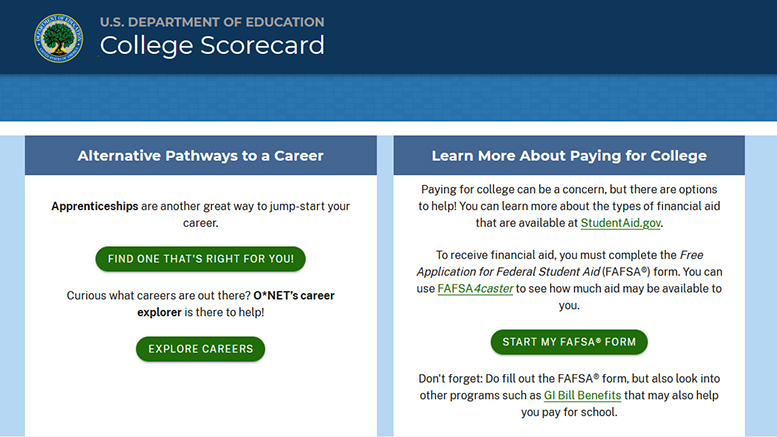The U.S. Education Department (ED) on Wednesday launched a revamped College Scorecard that includes data on potential debt and earnings based on fields of study, graduation rates and even apprenticeships.
Students and families now have access to information on the median earnings and median debt of a school’s graduates, based on their chosen field of study. That means a student interested in studying engineering can now compare outcomes, such as first-year earnings and student loan debt, among engineering programs within an institution and among those offered at other schools, according to ED.
“Students will be able to see if a career and technical education program at a two-year institution might generate a higher return on investment than a more traditional program at a four-year institution,” the department said. “Rather than having to rely on reputation-based rankings, the Scorecard will also allow students to choose a program based on the outcomes of students who have already completed that program.”
Previously, Scorecard users could only see the median earnings and median debt at the institutional level, which is “a fairly meaningless metric given the diversity of programs and outcomes at any given single school,” ED said.
Links to even more info
The main Scorecard site also includes prominent links to the U.S. Labor Department’s (DOL) apprenticeship page, which provides a search for apprenticeships by occupation/industry and proximity. It also links to DOL’s career explore website, as well as information about student aid, the federal student aid application and GI Bill benefits.
The department added that the new Scorecard builds on previous updates to include all students, including transfer and part-time students, to provide comprehensive data on graduation rates.
“Instead of focusing only on first-time, full-time student graduation rates, the Scorecard allows users to calculate graduation rates whether they are full-time, part-time, first-time, or transfer students,” it said. “With the click of a button, users can see the likelihood of graduation for students like them.”
Students also now can search for schools by acceptance rate, ACT/SAT scores and proximity. Earlier this year, ED updated the Scorecard to include information on 2,100 certificate-granting institutions.
The chatter
ED on Wednesday was in a promotional blitz for the new Scorecard.
“The new and improved #CollegeScorecard is now live, and it is more customizable and transparent than ever before! It provides real information students need to make informed, personalized decisions about their lifelong learning journeys,” Education Secretary Betsy DeVos posted on Twitter.
The new website site has so far received favorable reviews, even from organizations that typically don’t agree with the Trump administration on higher education policy matters.
“Today’s a big day for transparency in #highered! @usedgov deserves a lot of credit for rolling out a revamp of the #CollegeScorecard, alongside the new data file with new variables we look forward to digging into,” The Institute for College Access & Success (TICAS) posted on Twitter. TICAS President James Kvaal was deputy domestic policy adviser at the White House when the Obama administration rolled out the initial College Scorecard in 2015.

